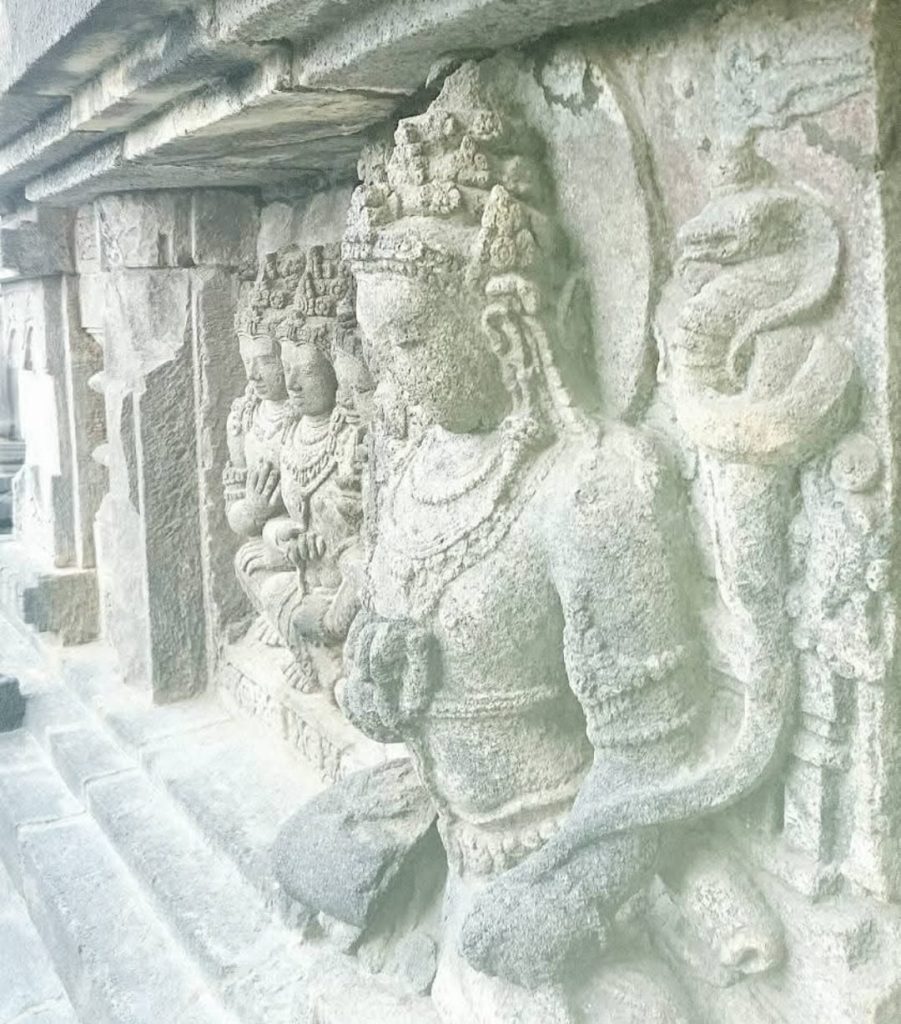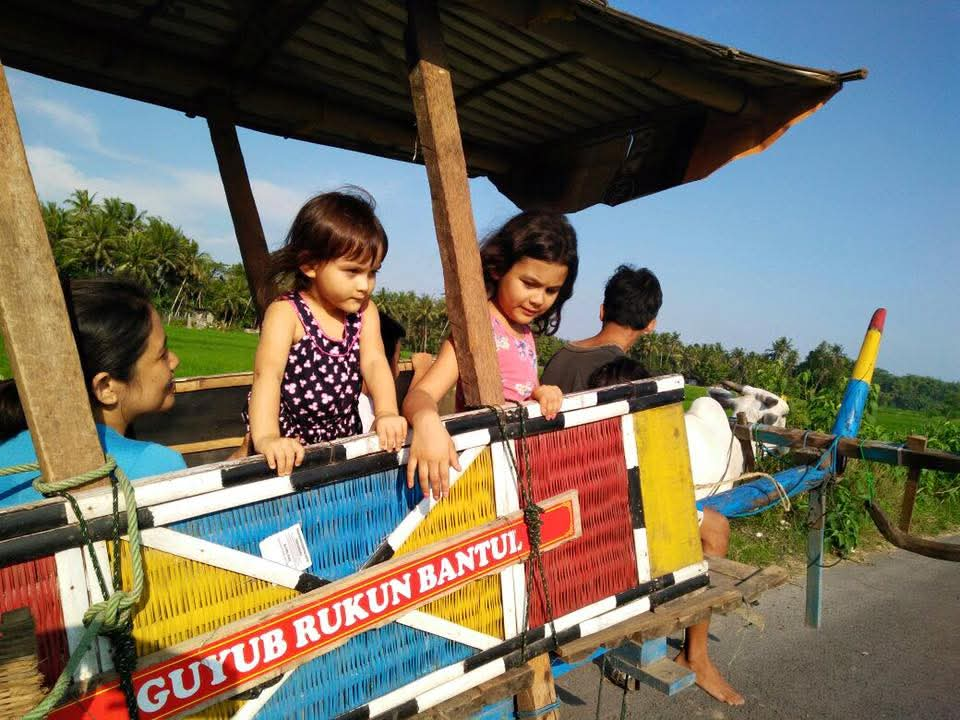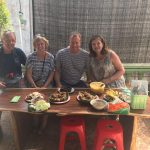Yogyakarta, also known as Jogja, is a city on the island of Java in Indonesia. It is a popular tourist destination, known for its rich culture, history, and natural beauty. Besides being known as a cultural city, Yogyakarta is also known as a student city. There are many famous universities, schools, and training institutions, as well as favorite places for students throughout Indonesia to study in the city of Yogyakarta.
Yogyakarta consists of four districts and one city. To the north is Sleman Regency, the west is Kulon Progo Regency, the east is Gunung Kidul Regency and the south is Bantul Regency. The city of Yogyakarta itself is in the middle of the four districts. And cities which is marked by the presence of the Yogyakarta Palace. The Yogyakarta Palace is led by a Sultan Hamengkubuwono who is now number X. In Yogyakarta there is no general election to elect a governor, because the Sultan is the governor of Yogyakarta.
The founding of the city of Yogyakarta began with the Giyanti agreement. One of the contents of the agreement was the division of the territory of the Mataram kingdom. In 1975 the construction of the Yogyakarta palace was completed and became the beginning of the commemoration of the anniversary of the city of Yogyakarta.
Yogyakarta was also once the temporary capital city. Due to the security situation in Jakarta, the capital city was moved to Yogyakarta in 1946 – 1949. In this article we will not talk about the history and culture of the city, but I will give recommendations for tourist attractions in the province of Yogyakarta. Here are some tourist attractions that you can include in your holiday list.
Temples in Yogyakarta City

Prambanan temple it is a Hindu temple that is situated about 11 miles northeast of Yogyakarta. As one of the biggest ancient temples in Southeast Asia, this Hindu temple is also a UNESCO world heritage site.Prambanan temple was built in the 9thcentury as a dedication for Trimurti gods of Hindu; Brahma, Vhisnu and Shiva.
Sambisari Temple, an archaeological wonder located in Purwomartani Village, Kalasan, Sleman, Yogyakarta, holds a ton of mystery and beauty. Hidden under layers of soil for centuries, this Hindu temple was only discovered in 1966 by accident by a farmer. .
Sari Temple, one of Indonesia’s historical and cultural icons, is located in Tirtomartani Village, Kalasan District, Sleman Regency, Yogyakarta Special Region. This temple is very special because it has unique architecture and holds many historical mysteries.
Estimated to have been built in the 8th century , Candi Sari is closely related to the Ancient Mataram Kingdom. The Kalasan inscription provides an indication that this temple was built on the orders of King Rakai Panangkaran. Its main function is believed to be a residence for monks or a monastery.
Kalasan Temple was built as a place of worship for the Goddess Tara, one of the goddesses in Buddhism. Apart from that, this temple also functions as a monastery for Buddhist priests. Kalasan Temple is thought to have been built in the 8th century on the orders of King Rakai Panangkaran. The construction of this temple was based on the recommendations of Buddhist religious leaders at that time.
Banyunibo Temple
Banyunibo Temple is one of the historical relics from the time of the Ancient Mataram Kingdom with a Buddhist style. This temple is located in Cepit, Bokoharjo, Prambanan District, Sleman Regency, Yogyakarta. Even though the name means “dropping water”, there is no water source found around the temple. Diferent with other temple complexes, Banyunibo is a single temple with a fairly large size.
Ijo Temple is a Hindu temple complex located in the hills, about 4 kilometers southeast of Ratu Boko Temple, Yogyakarta. It is estimated to have been built in the 9th to 10th centuries .
This temple is unique because it was built following the contour of the hill, so it has 11 terraces.
It is believed to be a place of worship, with the phallus yoni in the main temple as a symbol of Lord Shiva and Goddess Parwati. It has interesting architecture with reliefs that tell Hindu stories. Its high position provides beautiful views of Prambanan Temple and surroundings. The name “Ijo” does not come from the color of the temple, but from the name of the hill where it is located, namely Gumuk Ijo.
Ratu Boko in fact Ratu Boko is the ruins of a palace or palace which is thought to have been built in the 8th century.
The construction of Ratu Boko was started by the Buddhist Syailendra dynasty But was later taken over by the Hindu Mataram kingdom, so the building shows the influence of a Hindu-Buddhist combination.
It is estimated that Ratu Boko served as the center of government and residence of the king.
The name Ratu Boko is taken from a legend that links her to a king named Ratu Boko, who is said to be the father of Roro Jonggrang.
Sojiwan Temple
This temple is one of the remains of the Ancient Mataram Kingdom and is thought to have been built in the 9th century. Central Javanese architectural style, with three main parts: legs, body, and roof. The roof of the temple is terraced and decorated with stupas. The walls of the temple are decorated with reliefs that tell Pancatantra or Jataka stories. It is one of the largest Buddhist temples in Central Java, with a height of around 27 meters.
Plaosan Temple, a Buddhist temple complex located in Dukuh Plaosan, Bugisan Village, Prambanan District, Klaten Regency, Central Java, Indonesia, holds a deep love story and is clear evidence of religious tolerance in the past.
This Temple was built in the 9th century on the orders of King Rakai Pikatan from the Ancient Mataram Kingdom. This temple complex was built as an offering to his queen, Queen Pramudyawardhani, who was Buddhist, while the king adhered to Hinduism. This interfaith love story between Rakai Pikatan and Pramudyawardhani is the background for the construction of Plaosan Temple. This temple is a symbol of tolerance and respect for different beliefs.
Historical tourism in Yogyakarta City
Sultan Palace. Yogyakarta Palace also known as the Sultan Palace, is a symbol of Javanese culture and history. Located in the heart of Yogyakarta city, this munificent palace complex serve as the sultan residence.
Tamansari is not just a tourist site, but also a place rich in tradition and culture. Here, visitors can watch traditional arts performances, such as dance and music, which are often held to preserve local cultural.
Museum Vredeburg In 1992, Fort Vredeburg was officially designated as a Special Museum of the National Struggle. In this museum, visitors can find various dioramas, collections of artifacts, photos and documents. That tell in detail the long journey of the Indonesian nation’s struggle.
Gedung Agung was originally built in 1869 by the Dutch colonial government as a resident’s . With typical colonial architecture, this building reflects a blend of European and local styles. After Indonesia’s independence, Gedung Agung then functioned as the presidential palace and became the center of government of the Republic of Indonesia.
Sonobudoyo Museum is one of the oldest and most complete museums in Yogyakarta city which stores rich Javanese history and culture. Located in the heart of the city.. The name “Sonobudoyo” itself has a deep meaning, namely “the voice of culture”. Since its inception, this museum has been dedicated to preserving and promoting various aspects of Javanese culture. From fine arts, handicrafts, to historical objects.
Natural Tourist Attractions in Yogyakarta

Turtle Conservation at Gua Cemara Beach.
Not only known for natural beauty, Gua Cemara Beach is also one of the important turtle conservation centers in Indonesia. Efforts to conserve this endangered animal have been carried out by the local community. Together with various related parties, resulting in a significant impact on the preservation of the coastal ecosystem. Mr. Fajar Subekti is the chairman of turtle conservation at Gua Cemara Beach.
Parangtritis beach Located in Bantul Regency, Yogyakarta Special Region, this beach has become a tourism icon. With stunning natural beauty and strong mystical feel. Parangtritis always manages to captivate the hearts of visitors.
Bycicle tour in the village interact directly with villager, learning about their traditions and daily life. The opportunity to taste typical food and see the process of making handicrafts is also a valuable experience.
Ox cart tour or Gerobak sapi Nostalgia Riding an ox cart takes us back to the past Experiencing the sensation of traditional transportation that is simple but full of meaning.
Jeep Merapi is one of the famous tourist attractions in Yogyakarta city, Indonesia. Offering an off-road adventure experience, this tour takes visitors to explore the natural beauty and unique culture around Mount Merapi, one of the most active volcanoes in the world.
Pindul Cave
Pindul Cave is one of the popular natural tourist destinations in Yogyakarta city, Indonesia. Located in Bejiharjo Village, Karangmojo District, Gunung Kidul Regency. this cave is known for the beauty of its stalactites and stalagmites. as well as an interesting tubing experience.
Timang Beach is located in Gunungkidul Regency, Yogyakarta city, and is known as a tourist destination that offers stunning natural views. This beach, which has large waves, is known for producing a lot of lobsters. This beach is about 45 km from the center of Yogyakarta city.





 Mail Me
Mail Me

